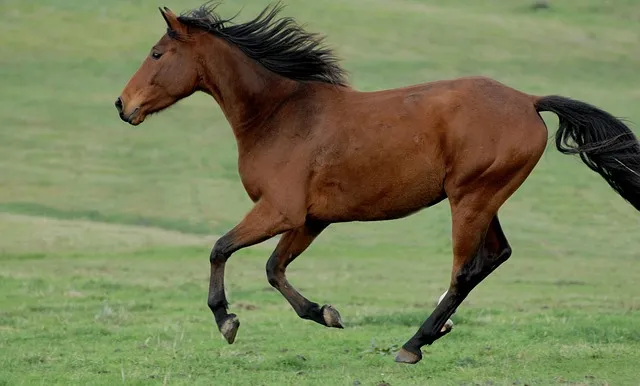The Karabakh is a unique breed that is very hardy, and can thrive in harsh conditions.
They are known for their endurance and strength.
If you’re thinking of adding a Karabakh horse to your stable, here’s what you need to know.
Karabakh Horse Breed Info
Here are some of the key things you need to know about the Karabakh:
| Height (size) | 13.2 – 13.3 hands high |
| Colors | Most commonly chestnut and bay, with a characteristic golden tint. Some grays are also seen, and palominos and buckskins are rare. White markings are allowed. |
| Country of Origin | Azerbaijan |
| Common Uses | Endurance riding, racing, packing, general riding |
Karabakh Facts & Information (Breed Profile)
It is named after the Karabakh region in Azerbaijan, where it first appeared.
The breed is very old, and it shares the same ancient bloodlines as the Akhal-Tekke horse.
According to the research done in the 19th century, some historians believe that it was in fact the Karabakh that greatly impacted the evolution of the Arabian horse.
The Karabakh horse developed its current characteristics in the 18th and 19th centuries. Akhal-Tekke, Persian Arabians, and the Arabian all contributed to the modern development of the breed.
Today, the purebred Karabakh horse is difficult to find since the original Karabakh was throughout time interbred with Akhal-Tekke, Karbadiner, Arabian and the now extinct Turkoman horse.
The Caucasus area as a whole, and the Karabakh region in particular, had a series of civil and ethnic conflicts throughout the early part of the 20th century, which led to a severe decline in the Karabakh horse numbers.
In 1905, the breeding business started by the Karabakh khans and expanded by their descendants was destroyed.
Subsequently, the Karabakhs were mixed with other breeds, which led to alterations such as a reduction in size.
The Agdam stud in Azerbaijan is credited with reviving the breed in the year 1949.
However, the breed suffered another setback during the First Nagorno-Karabakh War (1988 – 1994).
The Karabakh horse is Azerbaijan’s national animal.
The horse plays a significant role in Azerbaijani culture and has been featured in literature and on postage stamps.
The Karabakh itself was also used in the development of other breeds such as the Don horse and the Kabardin.
If you’re interested in learning more about this fascinating breed, keep reading!
Alternative Names
“Karabai”
Temperament/Personality
Good disposition
Physical Characteristics
The head is small with a straight profile and broad forehead.
The nostrils are big.
The neck is muscular, average in length and set high.
Due to the influence of the Akhal-Tekke, it has a small chest and a shallow girth.
The body is compact with well-developed muscles.
The shoulder is generally upright, but the croup is sloped.
The legs are long, and strong with small joints.
The coat is shiny, and the skin is thin.
Even though they are small they are energetic, fast and agile.
They are very hardy and surefooted, and have great endurance.
Colors
Most commonly chestnut and bay, with a characteristic golden tint.
Some grays are also seen, and palominos and buckskins are rare.
White markings are allowed.
Height (size)
13.2 – 13.3 hands high
Stallions
n/a
Mares
n/a
Weight
n/a
Blood Type
Warm
Common Uses
Endurance riding, racing, packing, general riding
Health
n/a
Popular Traits
Remarkable endurance
Feeding/Diet
n/a
Country of Origin
Azerbaijan
Ancestors
Turkoman horse, Persian horses, Arabian, Akhal-Tekke
